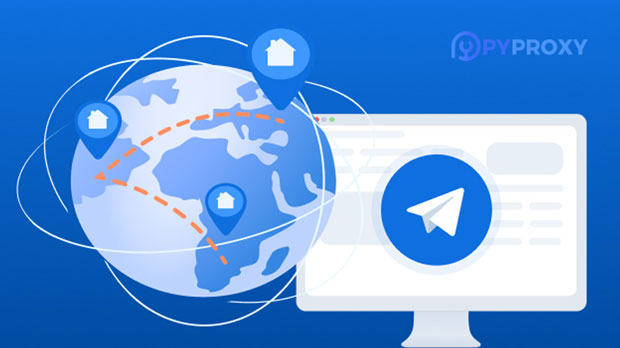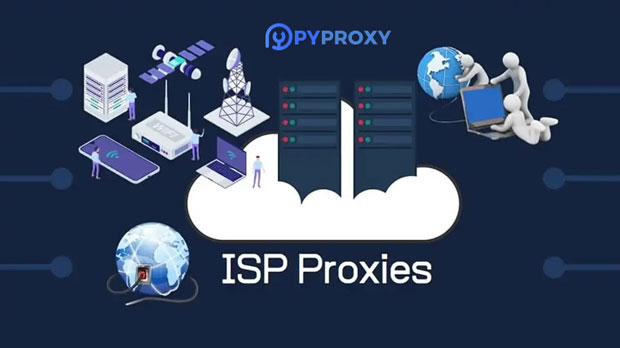In the world of web scraping, efficiency and reliability are key factors in collecting accurate and timely data. By combining PYPROXY and Proxyscrape, businesses and developers can overcome common issues such as IP blocking, throttling, and CAPTCHA challenges, allowing for faster and more efficient data collection. PyProxy, a Python package for proxy management, and Proxyscrape, a service that offers reliable proxy lists, complement each other perfectly. This combination enables users to manage multiple proxies, rotate them, and bypass restrictions seamlessly, all while minimizing downtime and ensuring anonymity. This article delves into how these tools can work together to enhance your web scraping operations and maximize the value of your data collection efforts. Understanding the Basics: What is PyProxy and Proxyscrape?Before diving into how PyProxy and Proxyscrape can be combined for efficient data collection, it's important to understand what each of these tools offers. PyProxy is a Python package that simplifies proxy management for web scraping applications. It allows users to handle and rotate proxies effortlessly, ensuring smooth and uninterrupted scraping. PyProxy can automatically choose different proxies from a provided list, switch them based on specific conditions (such as time or number of requests), and handle proxy errors to ensure continued access to target websites.Proxyscrape is a service that provides users with a wide range of proxies. These proxies are essential for web scraping, as they allow users to hide their real IP addresses, avoid rate limits, and bypass website restrictions. Proxyscrape offers various proxy types, such as HTTP, SOCKS5, and HTTPS, which can be tailored to different web scraping needs.The Need for Proxy Management in Web ScrapingWeb scraping can be a powerful tool for gathering data from the internet, but it comes with several challenges. Websites often impose limits on how many requests can be made in a given time frame to prevent scraping. Additionally, many websites detect and block scraping bots by identifying patterns in IP addresses. If multiple requests come from the same IP address too quickly, the site may block that address, halting data collection. This is where proxies come in.By using proxies, you can distribute requests across multiple IP addresses, making it much harder for websites to detect and block your scraping activities. Proxy management tools like PyProxy allow users to efficiently rotate proxies to avoid detection, while services like Proxyscrape provide a wide array of proxy options to choose from.Integrating PyProxy and Proxyscrape for Seamless Proxy RotationThe true power of PyProxy and Proxyscrape lies in how well they integrate with each other. By combining these two tools, users can create a robust system for proxy rotation that enhances the reliability and efficiency of their web scraping efforts.1. Accessing High-Quality Proxies from ProxyscrapeThe first step in combining PyProxy and Proxyscrape is to access a reliable list of proxies. Proxyscrape offers a wide selection of proxies that are frequently updated to ensure their effectiveness. Users can filter proxies based on specific criteria, such as geographical location, protocol type (HTTP, HTTPS, SOCKS5), and anonymity level. Once you’ve selected the proxies that fit your needs, you can download them and prepare them for use with PyProxy.2. Setting Up PyProxy for Proxy ManagementOnce you have a list of proxies, the next step is to set up PyProxy. PyProxy will handle the task of rotating these proxies during the scraping process. With PyProxy, you can easily configure proxy rotation settings, such as the frequency of proxy switches, and the number of requests before a proxy is changed. This ensures that requests are distributed across multiple proxies, making it less likely that any single proxy will be flagged or blocked by the website.3. Automating Proxy Rotation and Error HandlingOne of the key features of PyProxy is its ability to automate proxy rotation and handle errors. If a proxy gets blocked or experiences connection issues, PyProxy will automatically switch to another proxy from the list. This ensures that your scraping process continues without interruption. Additionally, PyProxy can handle IP bans, CAPTCHAs, and other obstacles that commonly arise during web scraping, allowing users to focus on collecting valuable data without worrying about technical issues.Benefits of Using PyProxy and Proxyscrape Together1. Enhanced Anonymity and SecurityBy rotating proxies, PyProxy and Proxyscrape help protect your identity during web scraping. When using a single IP address, your scraping activities are more likely to be detected, and your IP address could be blocked. With a proxy rotation strategy, the chances of detection are significantly reduced, making it easier to gather large amounts of data without interruptions. This is especially important for businesses that rely on web scraping for competitive analysis, market research, or data aggregation.2. Bypassing Geographical RestrictionsMany websites restrict access based on the user’s geographical location. Proxyscrape allows you to select proxies from different countries, enabling you to bypass these geographical restrictions and access data from any location. Combined with PyProxy’s proxy rotation capabilities, you can seamlessly access region-specific data from various websites, making your data collection efforts more versatile.3. Overcoming Rate Limiting and CAPTCHA ChallengesWebsites often implement rate limiting and CAPTCHAs to deter automated scraping. By using a pool of proxies, PyProxy can distribute requests across different IP addresses, ensuring that no single IP address is overburdened with too many requests. This prevents rate limiting and increases the chances of successfully bypassing CAPTCHAs. Moreover, PyProxy can be configured to pause between requests, mimicking human browsing behavior and reducing the likelihood of CAPTCHAs being triggered.Optimizing Your Web Scraping Strategy with PyProxy and ProxyscrapeTo make the most of PyProxy and Proxyscrape, it’s essential to implement best practices for efficient web scraping. 1. Select the Right Proxy TypesChoose the right proxy types based on your specific scraping needs. For example, HTTP proxies may be sufficient for scraping static web pages, while HTTPS or sock s5 proxies may be required for scraping websites with higher security. Proxyscrape allows you to filter proxies based on their type, so you can select the most suitable options for your use case.2. Avoid Using Too Many Proxies at OnceWhile it might be tempting to use a large number of proxies for faster data collection, using too many proxies at once can slow down your scraping process. PyProxy allows you to configure the number of proxies to use at a time, which can help optimize performance. Start with a manageable number of proxies and gradually scale up as needed.3. Regularly Update Your Proxy ListProxies can become unreliable over time, either because they get blocked or experience connectivity issues. To ensure the best performance, regularly update your proxy list by pulling fresh proxies from Proxyscrape. This ensures that your proxy pool remains effective and that you can continue scraping without interruptions.Conclusion: The Power of Combining PyProxy and ProxyscrapeIn conclusion, combining PyProxy and Proxyscrape is a powerful strategy for efficient and effective web scraping. By using PyProxy for seamless proxy management and Proxyscrape for high-quality, frequently updated proxies, you can overcome common obstacles like IP blocking, rate limiting, and CAPTCHAs. This combination allows for faster, more reliable data collection, enhancing the value of your web scraping efforts. Whether you’re gathering market research data, competitive intelligence, or any other type of information, using PyProxy and Proxyscrape together can significantly improve the efficiency and success of your scraping operations.
Mar 27, 2025
![arrow]()



























































